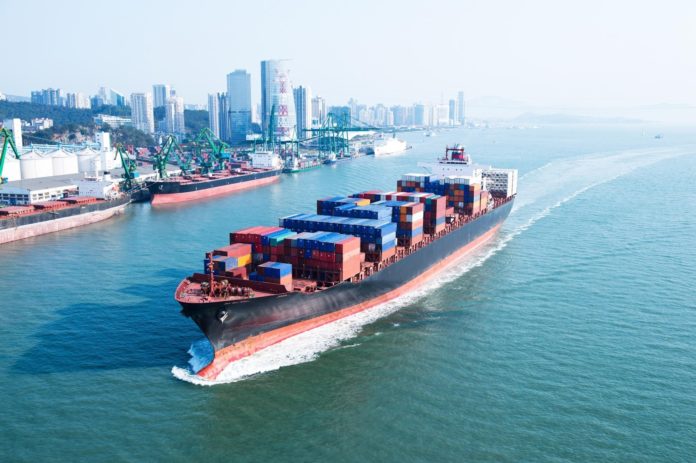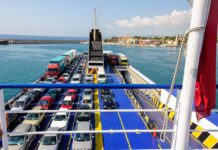Chief Types of Tugs
1. Ordinary pull
2. Azimuth harsh drive pull
3. Farm truck pull
1. Ordinary Tug
Probably the most established sort of pulls are the customary ones. They are as yet present in practically all the world ports with Harbour towage, despite the fact that they are driven away increasingly more by contemporary pulls with better moving abilities.
These days, they are furnished with diesel motors having a couple of propellers individually. With single propeller, contingent upon the sort, the most well-known is the right-gave (albeit left- – gave are likewise frequently met), and are furnished with an exemplary rudder.
The force plant complex is set at the harsh with the towing snare in the pull. The fundamental attribute of these pulls is high dependability and proficiency of intensity communicated in the power of “bollard pull”.
Propeller Configuration
Screw propeller — the “customary” gadget used to create push in water, normally determined by a diesel motor. Vessels are regularly depicted as single, twin or triple screw, contingent upon the quantity of propellers they have.
In this sort of drive just the rudder and spout can move, the propeller is fixed.
Favorable circumstances
– Simple development and less upkeep than CPPs
– No emotionally supportive network required
– Smaller propeller prompting expanded vast water
Burdens
– Performance debases quickly at off-plan conditions, where the vessel may work larger part of the time
– Not ready to give switch push ceaselessly the motor, except if a decrease gear is introduced
– Potential cavitation, quality and strength issues at exceptionally stacked off-plan conditions
Abilities and Limitations
Customary propeller/rudder designs are more effective for port-to-port towing.
Customary pulls are utilized for push-pull help, specifically for towing on a line. Monetary activities for utilizing on little and medium measured vessels.
These days, enormous vessels are not helped by traditional towing boats, however by azimuthal harsh drive(ASD) pulls.
Restrictions
• restricted moving capacities which is shown in moderate repositioning of pulls;
• amidships position of tow which brings about the chance of “girting”(capsizing) of the pull along the span of tow and thus could bring about overturning of the pull with lethal result for the group. Shocking aftereffect of girting is the team’s powerlessness for brief response because of rapid of the girting improvement. To abstain from girting, the pulls can be fitted with a snappy delivery snare
• The toward the back intensity of customary pulls is commonly low. When making quick close to the bow of a vessel, collaboration powers between the boat and the pull makes it hard for an ordinary pull to associate.
Situating of the towing snare
• Mainly because of the area of the towing point (for the most part 0.45 x LWL from the rearward) the pulls have restrictions with respect to execution and security.
• When utilizing a gob-line, the towing point is moved further to the toward the back and diminishes the mobility of the pull.
2. Azimuth harsh drive (ASD) pull
These pulls are fitted with two engines at the rearward of the boat. The engines can each autonomously turn at a point of 360°. So the engines can provide push in each guidance. Azimuth engines can be fitted with fixed pitch propellers or controllable pitch propellers(CPP). The upside of having a CPP framework is the likelihood to have quick opposite push and higher effectiveness with various burdens.
ASD pulls are fitted with a towing winch, which is situated on the foredeck rather than the toward the back deck. An ASD pull is especially towing over the bow. This implies just like a bow pull it is generally cruising toward the back.
Propeller Configuration
This sort of impetus framework makes the pull profoundly flexibility and safe during making quick at the bow, on the grounds that the push can be done aside. The ASD pull can undoubtedly cruise sideways however needs to turn their rudder propellers in nearly the other way, to make adequate force at the rearward boat to drag the structure sideways through the water. This method of moving will lessen the towline power essentially.
Preferences
– Good mobility because of 360o turning propellers
– Low upkeep costs
– They don’t need a ton of room in the motor room
– Excellent in blend with diesel generators, making a principle motor repetitive
Detriments
– The sharp edges are fixed
– Installing engines costs more than introducing a customary propeller
Abilities and Limitations
ASD pulls have azimuthal engines fitted on the rearward of the vessel, giving them phenomenal moving attributes for towing over the bow.
One of the disservices are the fixed edges. Anyway this isn’t essential in light of the fact that the propeller is driven by an electric engine. As a result of the most recent innovation in recurrence regulators it is currently conceivable to diminish an electro-engine its capacity conveyance without losing productivity
Azimuth engines are utilized generally for transport docking and marine development.
3. Farm truck Tug (Voith-Schneider)
These kinds of pulls are fitted with two azimuthal engines or Voith Schneider engines at the bow (forward of the amidships). These pulls are fitted with a harbor towing winch which is situated toward the back deck. The harsh and bow is commonly vigorously ensured by bumpers so this makes it reasonable for push and pull tasks.
The huge skeg is regular for farm truck pulls and specific for Voith work vehicle pulls. It builds the course soundness and brings the focal point of the hydrodynamic weight more to the back. The latter is a major preferred position while Pilotage services on a line as an after pull, extraordinary high power can be begun.
The azimuth work vehicle pulls have nearly similar qualities as the Voith Schneider farm hauler pulls. Just here and there the skeg of the azimuth work vehicles are littler than the Voith farm truck pulls.









